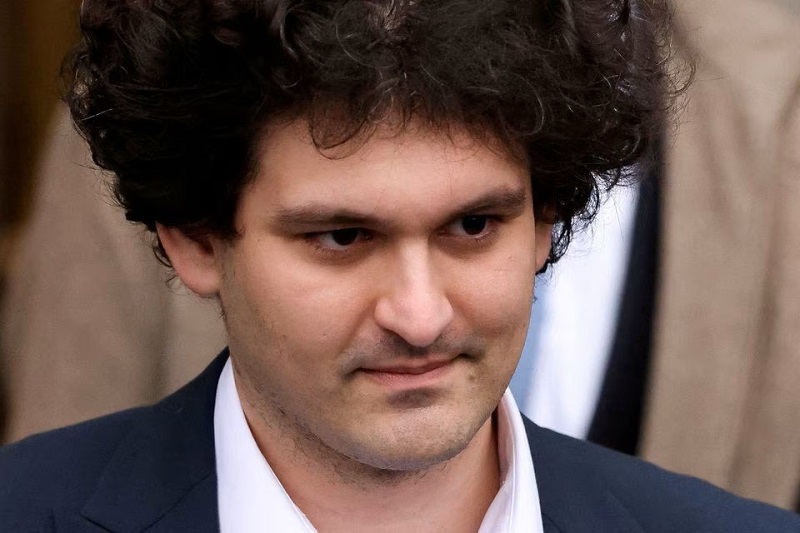Proactive Investors - Almost one year after the dramatic downfall of FTX, once the world's second-largest cryptocurrency exchange, founder and former chief executive Sam Bankman-Fried is about to have his day in court.
Bankman-Fried will face the US judiciary on several charges of fraud, money laundering and even illegal political donations during his time running FTX and sister venture fund Alameda Research.
A conviction on these charges could potentially result in a jail sentence spanning multiple lifetimes.
Today, the 31-year-old embarks on his trial in Manhattan, New York, where he aims to portray himself in a compassionate light to the jury members.
As the trial progresses, he will be hearing testimony from former colleagues who swiftly rolled over and took plea bargains for cooperation in the trial.
Chief among the witnesses is former lover and Alameda Research boss Caroline Ellison, who is expected to provide evidence of Alameda illegally using funds siphoned from FTX customer accounts to place risky private equity investments.
She is unlikely to hold back any punches.
Bankman-Fried has been in and out of jail since being extradited from the Bahamas in January.
Initially out on a $250 million bond at his parents’ California mansion, his bail was revoked in August after alleged witness tampering. Since then, vegan Bankman-Fried has been locked up in a Brooklyn jail on a diet of bread, water and peanut butter.
His bond was revoked following a New York Times article that published extracts from Ellison’s private diary entries, which the Department of Justice (DoJ) blamed Bankman-Fried for leaking.
The diary leaks painted a somewhat sympathetic picture of Ellison, in which she discussed being ill-equipped to run Alameda Research and having feelings of joy over Alameda’s and FTX’s pending collapse.
The leaks could prove to be an act of self-sabotage, denting Bankman-Fried’s standing with the jury.
Ineptitude or malice?
Whether through incompetence or malice, Bankman-Fried’s ineptitude in running a multi-billion-dollar crypto empire will come under the microscope in the trial.
FTX was once looked at as the gold standard for transparency, accountability and reliability in a sector largely considered to have none of these traits.
In reality, Bankman-Fried’s company is accused of misusing up to $8.7bn in customer funds for speculative trading, luxury properties and political donations, according to a report to the US Bankruptcy Court.
FTX allegedly commingled customer and corporate funds, engaging in deceptive practices to evade detection.
Bankman-Fried and other FTX executives allegedly spent over $243 million of customer deposits on real estate in the Bahamas, including multimillion-dollar luxury properties for employees, friends and family.
The FTX Foundation for Charitable Giving is also implicated, with claims of donations being funded by commingled accounts.
A balance sheet built on sand
One of the more convoluted aspects of the trial will be in relation to FTX’s native crypto token FTT.
FTT’s value was effectively plucked from thin air, yet it comprised a significant percentage of Alameda’s balance sheet.
When CoinDesk first published Alameda’s balance sheet in November 2022, it showed that Alameda’s single largest asset was $3.66 billion of “unlocked” FTT tokens.
The third-largest entry on the assets side of the balance sheet was $2.16 billion in “FTT collateral”.
“While there is nothing per se untoward or wrong about that, it shows Bankman-Fried’s trading giant Alameda rests on a foundation largely made up of a coin that a sister company invented, not an independent asset like a fiat currency or another crypto,” CoinDesk said at the time.
When the balance sheet was released, FTT’s entire market cap was only around $5 billion, meaning Alameda apparently had more FTT tokens on its balance sheet than there were in existence.
$292 million of the Solana (SOL) altcoin was also featured on the balance sheet.
Bipartisan political donations
Bankman-Fried allegedly concealed tens of millions of dollars in political donations through two FTX executives, according to court documents released in February.
Bankman-Fried allegedly used one executive to funnel donations to centre-left candidates and causes, while another donated to Republican candidates and causes.
That added up to more than 300 donations worth tens of millions of dollars, potentially illegal because they were made “in the name of a straw donor or paid for with corporate funds”.
The cited reason for using straw donors is to bypass individual campaign contribution limits.
From fraud and murky tokenomics to nefarious political donations, the former king of crypto is facing a legal reckoning from many, many angles.
